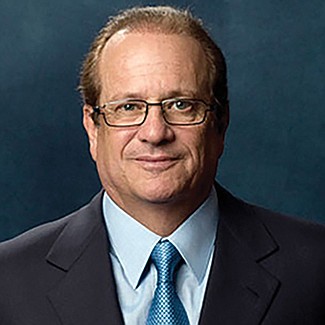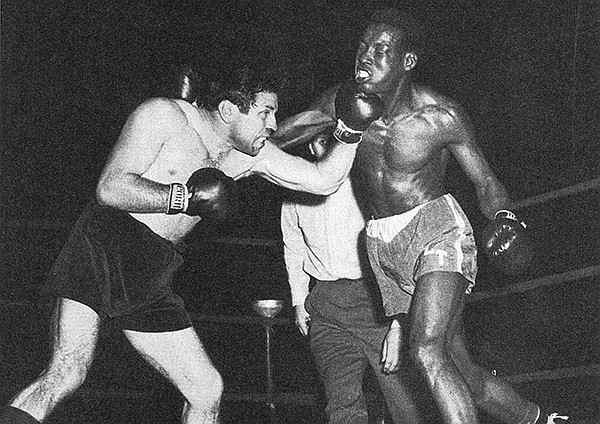 Facebook
Facebook
 X
X
 Instagram
Instagram
 TikTok
TikTok
 Youtube
Youtube

When billionaires beseech taxpayers to ante up for a football stadium, you can count on a repeat supplication in 30 years or so, even though the facility may be in tip-top shape.

But what if football itself is not in tip-top shape in 30 years? This is one of the questions San Diegans must pose as Dean Spanos, billionaire chairman of the Chargers, holds out his hat for a fat stadium subsidy. (Promoters now say the stadium will be privately-financed, but San Diegans should not believe that.)
With all the press coverage of injuries (particularly of the brain) and player drug use and domestic violence, today’s huge pro-football market may steadily diminish.
And there are some people who feel that governments subsidizing pro-football stadiums may one day be found financially liable, in part, for serious injuries on the field.

Victor Matheson, economist at the College of the Holy Cross, says, “There is some question about the long-term viability of professional football because of health concerns. You could build a stadium for a sport that doesn’t even exist by the time the stadium’s useful life is over.”
Pro football’s demise seems impossible now. This year’s Super Bowl was the third-most-watched television broadcast ever, attracting almost 112 million viewers. In first place was last year’s extravaganza, with a video audience of 114.4 million. In second place was the previous year with 112.2 million. Since 2010, the game has attracted more than 100 million viewers every year. Most of the team owners are billionaires.
The value of teams ranges from $1.4 billion (Buffalo Bills) to $4 billion (Dallas Cowboys), according to Forbes magazine. The Chargers’ worth is estimated at $1.53 billion. Those values have roughly doubled in a decade. The league’s total revenue was $12.4 billion last year, about double the level of ten years ago.
But look what happened to boxing. Fifty years ago, people loved prizefights, a television favorite. Back then, the brain injury we now know as chronic traumatic encephalopathy (CTE) was called dementia pugilistica. Boxers suffering from it were called “punch-drunk.” The public became concerned, and the sport faded surprisingly quickly.

“Imagine somebody having spent hundreds of millions of dollars on boxing rings or horse-racing venues,” says Matheson. “They were two of the most popular sports in the first part of the 20th Century. The investor could have lost everything.” Today, “football is becoming a guilty pleasure,” he says.
Football promoters have to be worried. A Bloomberg News poll indicates that half of Americans don’t want their sons playing football. Bloomberg, too, points to the fast decline of boxing. People became repulsed by injuries caused by the sport’s violence, participants’ drug use, and athletes making headlines for violent crimes, often domestic. Americans are horrified by legendary football stars such as San Diego icon Junior Seau, who suffered from chronic traumatic encephalopathy and eventually committed suicide. Retired pro-football heroes such as Mike Ditka and Troy Aikman have expressed reservations about the sport that made them rich and famous. President Obama has expressed qualms about football.
According to the Centers for Disease Control and Prevention, players with at least five years of National Football League experience are three times more likely to die of brain damage than the general population. According to the San Jose Mercury News, “The [National Football League] itself has stated in court documents that it expects nearly one-third of retired players to develop long-term cognitive problems.” Players weigh huge salaries today against huge risks in retirement.
Thus far, football is hardly suffering grievously. Participation in Pop Warner and high-school football is down only a bit from a few years ago. “But at least there is a kernel of truth that some people are changing how they behave,” says Matheson.
“I have a feeling the [National Football League] has a pretty bad business model,” says Philip Porter, economist at the University of South Florida. “I have a real sense that this model is not going to last.” To protect the players from injuries, the National Football League is turning the game over to referees, he says. As a result, violence-addicted fans are less interested. As stories about dementia multiply, “the kids quit playing,” greatly at their parents’ insistence. Football-team owners could have an asset diminishing in value.
Rob Baade, economist at Lake Forest College in Illinois, says, “It’s all about risk,” and asks, “What protection do cities have?” The National Football League will fight to retain its popularity. “The first function of any organism is survival, and the NFL has a lot in the way of resources.” Governments making a long-term bet on pro football’s appeal are rolling the dice, he says, and that’s why, as Porter points out, “there is a backlash from cities” over the subsidies to teams.
Will the day come when governments that subsidize teams will be sued over player injuries? Schools are sued for negligence when a young player suffers an avoidable injury. However, “It’s not quite the same as suing the school board over sports injuries,” says Rodney Fort, economist at the University of Michigan. “The school board is the actual provider of the activity,” unlike a city, county, or state providing stadium funds.
Attorneys involved in sports-injury litigation doubt that a subsidizing government today could be found partially responsible for injuries. Michael Kaplen, who specializes in brain-injury cases and is a lecturer at George Washington University Law School, says, “Since the government entity has no control over the team and is just financing the stadium, I do not believe that a court would find that it had any duty or obligation to prevent injury.”
Says Robert Boland, chief executive of Boland Sports Practice and a faculty member at Ohio University’s sports-management program, “It would be difficult to prove that one location or venue played a major role in a chronic injury. I would assume most municipalities would require teams or others using facilities to require insurance, and in many cases, this would be enough to avoid liability — although it certainly would not be a complete bar.”
But times change. Municipalities such as San Diego have to be concerned about 30 years from now — not the law as it is presently interpreted. “It all falls under workplace safety. Other innovative legal approaches should always be expected,” says Fort.
Thirty years from now, that may mean financial liability.


When billionaires beseech taxpayers to ante up for a football stadium, you can count on a repeat supplication in 30 years or so, even though the facility may be in tip-top shape.

But what if football itself is not in tip-top shape in 30 years? This is one of the questions San Diegans must pose as Dean Spanos, billionaire chairman of the Chargers, holds out his hat for a fat stadium subsidy. (Promoters now say the stadium will be privately-financed, but San Diegans should not believe that.)
With all the press coverage of injuries (particularly of the brain) and player drug use and domestic violence, today’s huge pro-football market may steadily diminish.
And there are some people who feel that governments subsidizing pro-football stadiums may one day be found financially liable, in part, for serious injuries on the field.

Victor Matheson, economist at the College of the Holy Cross, says, “There is some question about the long-term viability of professional football because of health concerns. You could build a stadium for a sport that doesn’t even exist by the time the stadium’s useful life is over.”
Pro football’s demise seems impossible now. This year’s Super Bowl was the third-most-watched television broadcast ever, attracting almost 112 million viewers. In first place was last year’s extravaganza, with a video audience of 114.4 million. In second place was the previous year with 112.2 million. Since 2010, the game has attracted more than 100 million viewers every year. Most of the team owners are billionaires.
The value of teams ranges from $1.4 billion (Buffalo Bills) to $4 billion (Dallas Cowboys), according to Forbes magazine. The Chargers’ worth is estimated at $1.53 billion. Those values have roughly doubled in a decade. The league’s total revenue was $12.4 billion last year, about double the level of ten years ago.
But look what happened to boxing. Fifty years ago, people loved prizefights, a television favorite. Back then, the brain injury we now know as chronic traumatic encephalopathy (CTE) was called dementia pugilistica. Boxers suffering from it were called “punch-drunk.” The public became concerned, and the sport faded surprisingly quickly.

“Imagine somebody having spent hundreds of millions of dollars on boxing rings or horse-racing venues,” says Matheson. “They were two of the most popular sports in the first part of the 20th Century. The investor could have lost everything.” Today, “football is becoming a guilty pleasure,” he says.
Football promoters have to be worried. A Bloomberg News poll indicates that half of Americans don’t want their sons playing football. Bloomberg, too, points to the fast decline of boxing. People became repulsed by injuries caused by the sport’s violence, participants’ drug use, and athletes making headlines for violent crimes, often domestic. Americans are horrified by legendary football stars such as San Diego icon Junior Seau, who suffered from chronic traumatic encephalopathy and eventually committed suicide. Retired pro-football heroes such as Mike Ditka and Troy Aikman have expressed reservations about the sport that made them rich and famous. President Obama has expressed qualms about football.
According to the Centers for Disease Control and Prevention, players with at least five years of National Football League experience are three times more likely to die of brain damage than the general population. According to the San Jose Mercury News, “The [National Football League] itself has stated in court documents that it expects nearly one-third of retired players to develop long-term cognitive problems.” Players weigh huge salaries today against huge risks in retirement.
Thus far, football is hardly suffering grievously. Participation in Pop Warner and high-school football is down only a bit from a few years ago. “But at least there is a kernel of truth that some people are changing how they behave,” says Matheson.
“I have a feeling the [National Football League] has a pretty bad business model,” says Philip Porter, economist at the University of South Florida. “I have a real sense that this model is not going to last.” To protect the players from injuries, the National Football League is turning the game over to referees, he says. As a result, violence-addicted fans are less interested. As stories about dementia multiply, “the kids quit playing,” greatly at their parents’ insistence. Football-team owners could have an asset diminishing in value.
Rob Baade, economist at Lake Forest College in Illinois, says, “It’s all about risk,” and asks, “What protection do cities have?” The National Football League will fight to retain its popularity. “The first function of any organism is survival, and the NFL has a lot in the way of resources.” Governments making a long-term bet on pro football’s appeal are rolling the dice, he says, and that’s why, as Porter points out, “there is a backlash from cities” over the subsidies to teams.
Will the day come when governments that subsidize teams will be sued over player injuries? Schools are sued for negligence when a young player suffers an avoidable injury. However, “It’s not quite the same as suing the school board over sports injuries,” says Rodney Fort, economist at the University of Michigan. “The school board is the actual provider of the activity,” unlike a city, county, or state providing stadium funds.
Attorneys involved in sports-injury litigation doubt that a subsidizing government today could be found partially responsible for injuries. Michael Kaplen, who specializes in brain-injury cases and is a lecturer at George Washington University Law School, says, “Since the government entity has no control over the team and is just financing the stadium, I do not believe that a court would find that it had any duty or obligation to prevent injury.”
Says Robert Boland, chief executive of Boland Sports Practice and a faculty member at Ohio University’s sports-management program, “It would be difficult to prove that one location or venue played a major role in a chronic injury. I would assume most municipalities would require teams or others using facilities to require insurance, and in many cases, this would be enough to avoid liability — although it certainly would not be a complete bar.”
But times change. Municipalities such as San Diego have to be concerned about 30 years from now — not the law as it is presently interpreted. “It all falls under workplace safety. Other innovative legal approaches should always be expected,” says Fort.
Thirty years from now, that may mean financial liability.
Comments